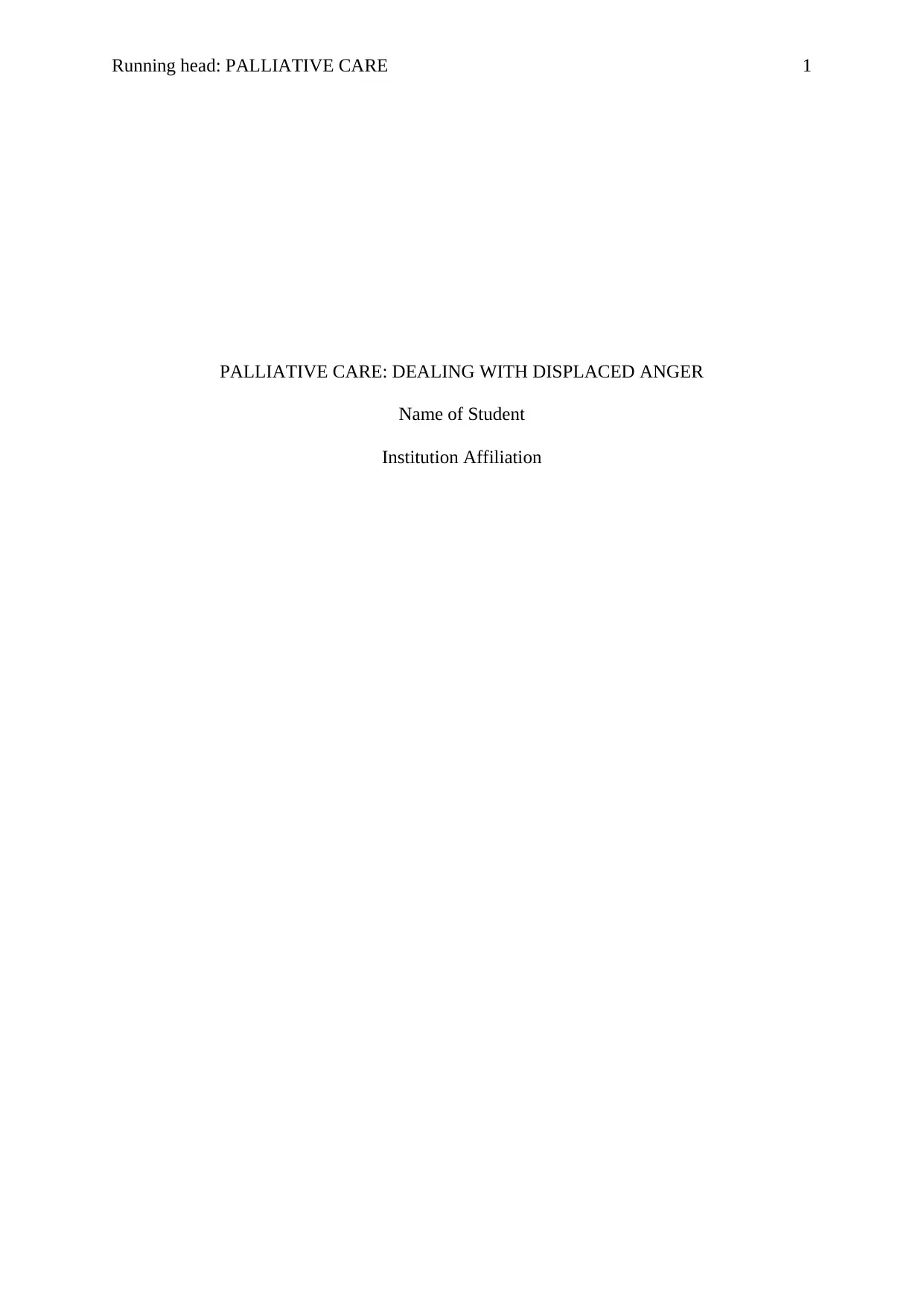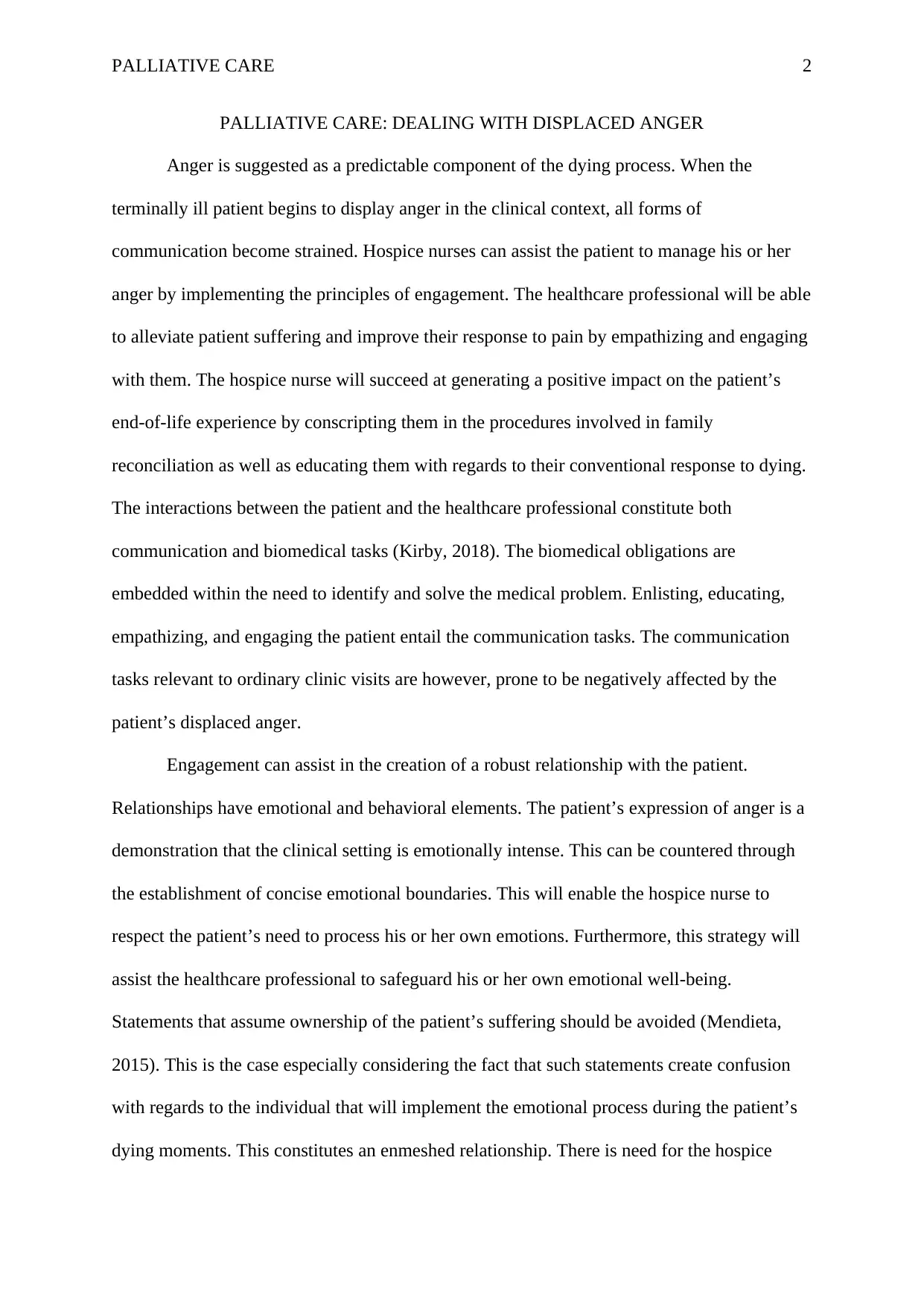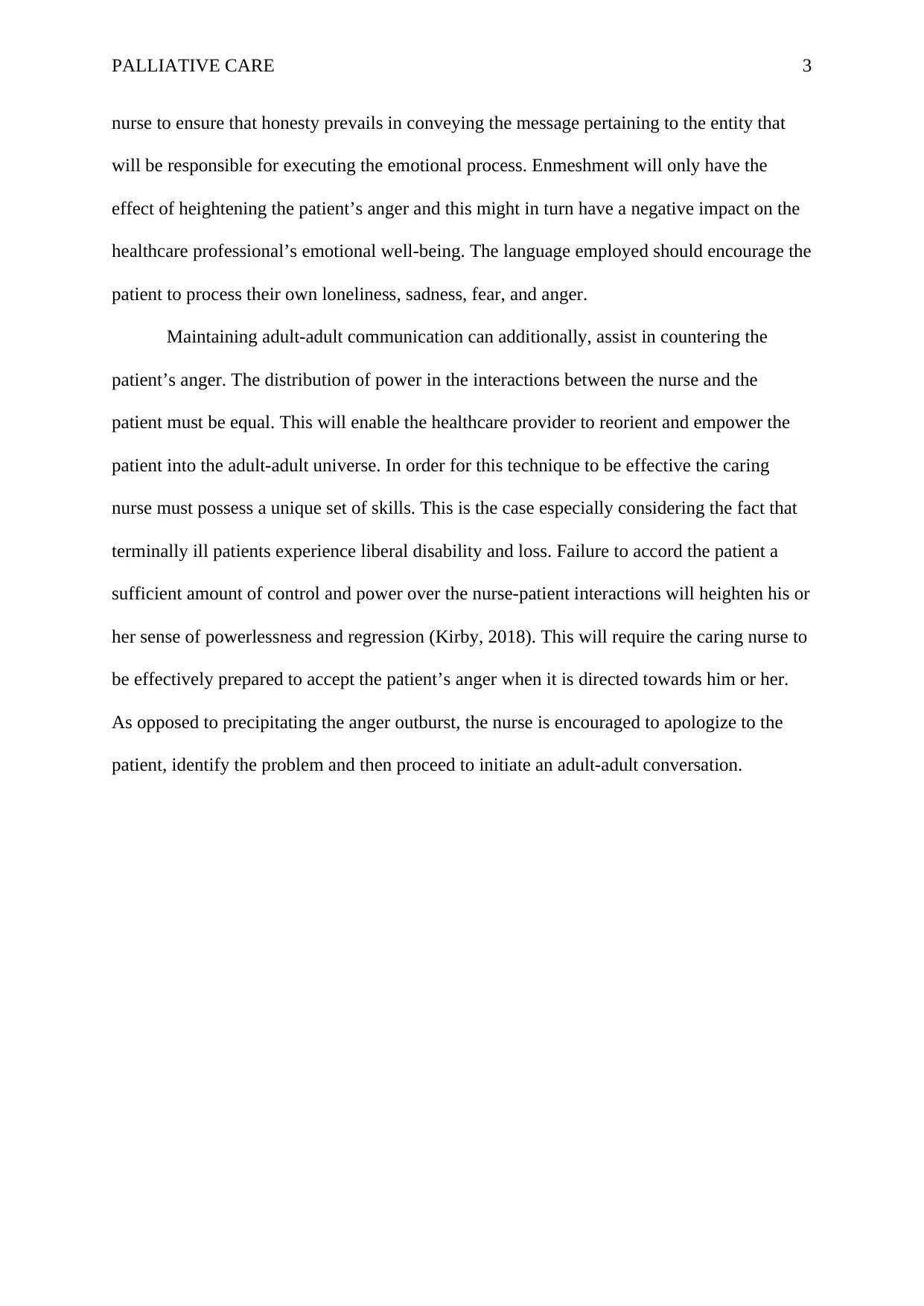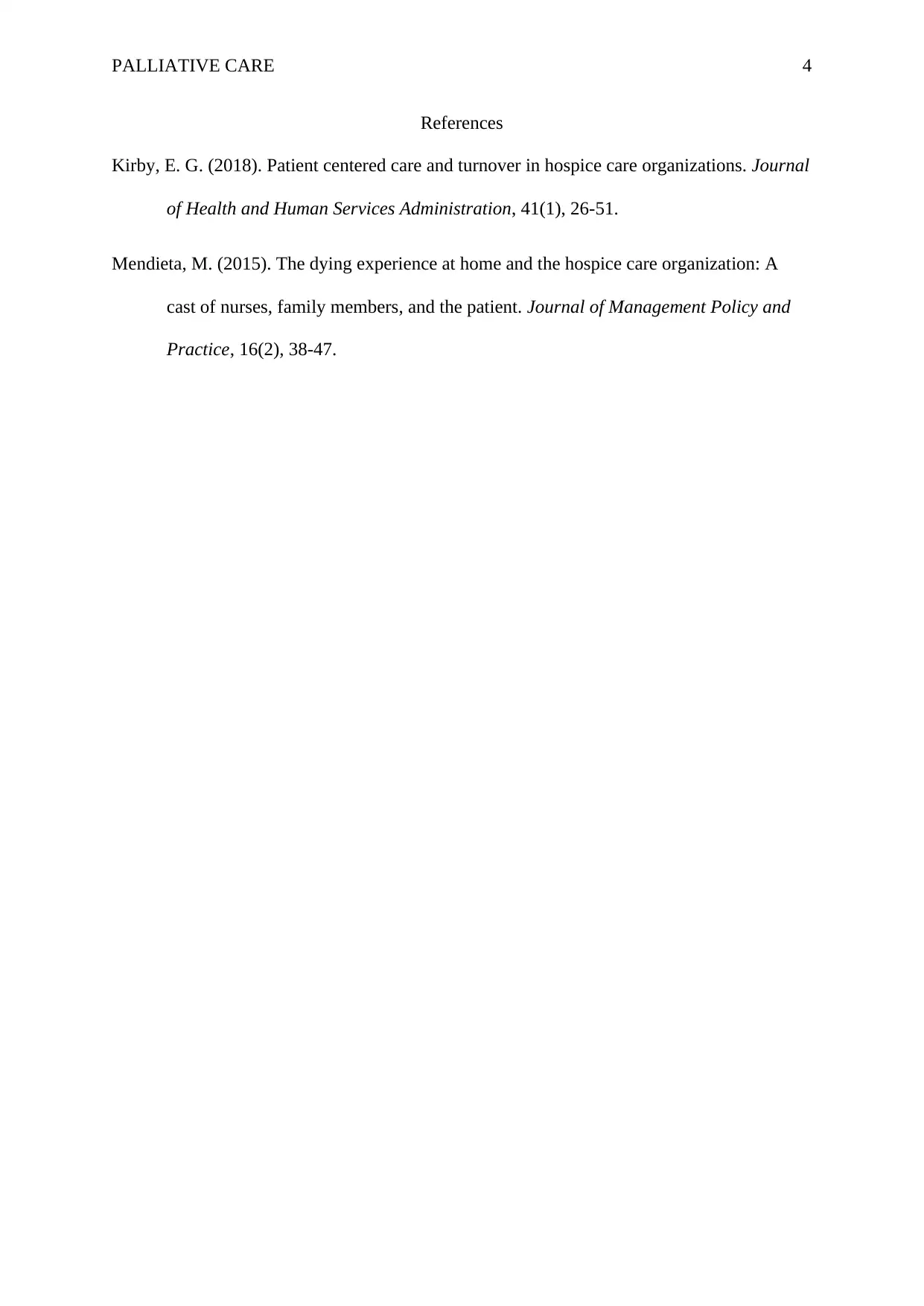Palliative Care Essay: Managing Displaced Anger in Hospice Patients
VerifiedAdded on 2020/10/15
|4
|700
|48
Essay
AI Summary
This essay delves into the crucial aspect of managing displaced anger in palliative care, a common emotional response among terminally ill patients. It highlights the pivotal role of hospice nurses in navigating this challenging aspect of end-of-life care. The essay emphasizes the importance of engagement, communication, and empathy in alleviating patient suffering and improving their response to pain. It outlines strategies such as establishing emotional boundaries, promoting adult-adult communication, and empowering patients to maintain a sense of control. The essay underscores the significance of honesty, avoiding enmeshment, and encouraging patients to process their emotions. The essay references the importance of the nurse's ability to accept and respond to the patient's anger in a constructive manner. The ultimate goal is to create a supportive environment that enhances the patient's end-of-life experience.
1 out of 4











![[object Object]](/_next/static/media/star-bottom.7253800d.svg)